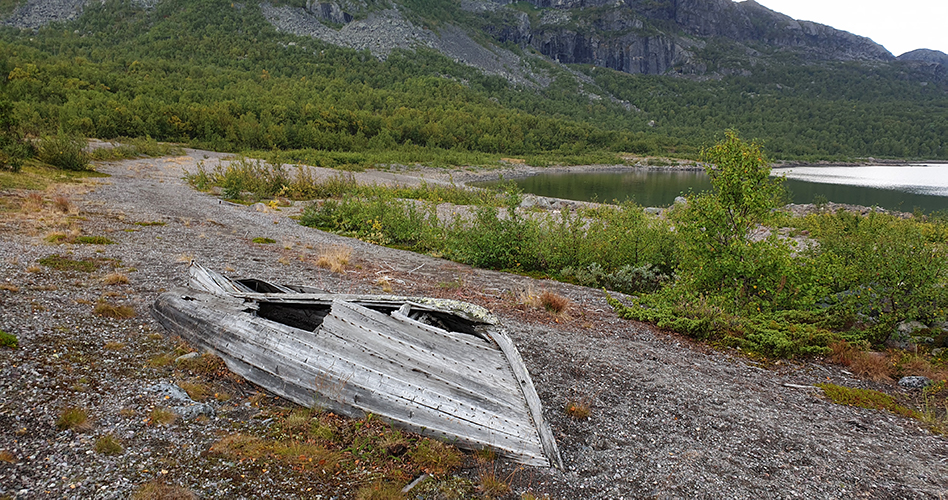 Foto: Laponiatjuottjudus
Foto: LaponiatjuottjudusHistory
In 1890 the Swedish Tourist Association built a mountain cabin at Stuor Muorkke.
At first you could get there only by rowing boat. In 1914 motorboat service began. Almost ten years later you could go by motorboat all the way up to Rijtjem. For Swedish tourism, the Sjöfall Trail became a familiar term, and the falls that people came to look at became known as “the Niagara of the North”.
Sami migratory route
For the Sami people who have lived in the area, this has long been a migratory route. They dragged their boats across the various portages that separated the lakes from one another. Those who devoted themselves to fishing lived more permanently in one place. Some sold handicrafts and guided visiting tourists.
Redrawing of the park boundaries
In 1909 it was decided that Stora Sjöfallet/Stuor Muorkke should become a national park along with Sarek, Abisko and others. The model was national parks in the U.S. such as Yellowstone.
At about the same time Sweden had begun investigating ways to provide electricity to mines in the ore-field and for ore transportation. In 1919 the Swedish Parliament approved construction of a large dam by Suorvvá in the national park. The part that was to be exploited was extracted from the park and the boundaries for the national park were redrawn. Today, after four successive raisings of the dam level, old settlements, ancient remains and grazing land lie underwater. Some of the old national park became an industrial zone, which has had a pronounced effect on the area’s local population.
Part of the Laponia World Heritage Site
In 1996 the national park became part of the Laponia Area, a World Heritage Site, along with Muddus/Muttos, Sarek, Padjelanta/Badjelánnda and the Sjávnja and Stubbá nature reserves. The Laponia Area also includes regions adjoining Badjelánnda: Sulidälbmá and Tjuoldavuobme as well as Ráhpaäno Suorgudahka in the Lájtávrre delta.
The designation as a World Heritage Site is based on the nature and culture in the area. The national park is now called Stora Sjöfallet/Stuor Muorkke to revert to the original Sami term for the place.
Share with your friends
Share this page with your friends on Facebook, X (formerly Twitter), Google+ and e-mail.





